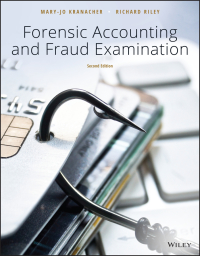



2.


Simon Company's year-end balance sheets follow. Current Year 1 Year Ago 2 Years Ago At December 31 Assets Cash Accounts receivable, net Merchandise inventory Prepaid expenses Plant assets, net Total assets Liabilities and Equity Accounts payable Long-term notes payable Common stock, $10 par value Retained earnings Total liabilities and equity $ 31,800 89,500 112,500 10, 700 278,500 $ 523,000 $ 35,625 62,500 82,500 9,375 255,000 $ 445,000 $ 37,800 50,200 54,000 5,000 230, 500 $ 377,500 $ 129,900 98,500 163,500 131, 100 $ 523,000 $ 75,250 101,500 163,500 104,750 $ 445,000 $ 51, 250 83,500 163,500 79, 250 $ 377,500 The company's income statements for the current year and 1 year ago, follow. For Year Ended December 31 Sales Cost of goods sold Other operating expenses Interest expense Income tax expense Total costs and expenses Net income Earnings per share Current Year $ 673,500 $ 411,225 209,550 12,100 9,525 642,400 $ 31,100 1 Year Ago $ 532,000 $ 345,500 134,980 13,300 8,845 502,625 $ 29,375 $ 1.80 $ 1.90 Additional information about the company follows. Additional information about the company follows. Common stock market price, December 31, Current Year Common stock market price, December 31, 1 Year Ago Annual cash dividends per share in Current Year Annual cash dividends per share 1 Year Ago $ 30.00 28.00 0.29 0.24 For both the current year and one year ago, compute the following ratios: 1. Return on equity. 2. Dividend yield. 3a. Price-earnings ratio on December 31. 3b. Assuming Simon's competitor has a price-earnings ratio of 10, which company has higher market expectations for future growth? Complete this question by entering your answers in the tabs below. Required 1 Required 2 Required 3A Required 3B Compute the return on equity for each year. Return On Equity Numerator: / Denominator: = Return On Equity / Return on equity Current Year / % 1 Year Ago / % Required 1 Required 2 Required 3A Required 3B Compute the dividend yield for each year. (Round your answers to 2 decimal places.) Dividend Yield Numerator: 1 Denominator: II = ! - Dividend Yield Dividend yield % % / 11 Current Year: 1 Year Ago: / II Required 1 Required 2 Required 3A Required 3B Compute the price-earnings ratio for each year. (Round your answers to 2 decimal places.) Price-Earnings Ratio 1 Denominator: Numerator: Price-Earnings Ratio Price-earnings ratio / Current Year: / = 1 Year Ago: / 11 Sales Cost of goods sold Accounts receivable 2021 $ 282,880 128,200 18,100 2020 $ 270,800 122,080 17,300 2019 $ 252,600 115,280 16,400 2018 $ 234,560 106,440 15, 200 2017 $ 150,000 67,000 9,000 Compute trend percents for the above accounts, using 2017 as the base year. For each of the three accounts, state whether the situation as revealed by the trend percents appears to be favorable or unfavorable. Trend Percent for Net Sales: Numerator: Denominator: Trend percent 2021: 1 1 1 % 2020: % 2019: / % 2018: / % 2017: 1 % Trend Percent for Cost of Goods Sold: Denominator: Numerator: = Trend percent 2021: / % 2020: 1 = % 2019: 1 - % % 2018: 2017: % Numerator: Trend Percent for Accounts Receivables: 1 Denominator: / / 1 Trend percent 2021: 2020: % % 11 2019: / % 2018: / 11 % 2017: / 11 %












